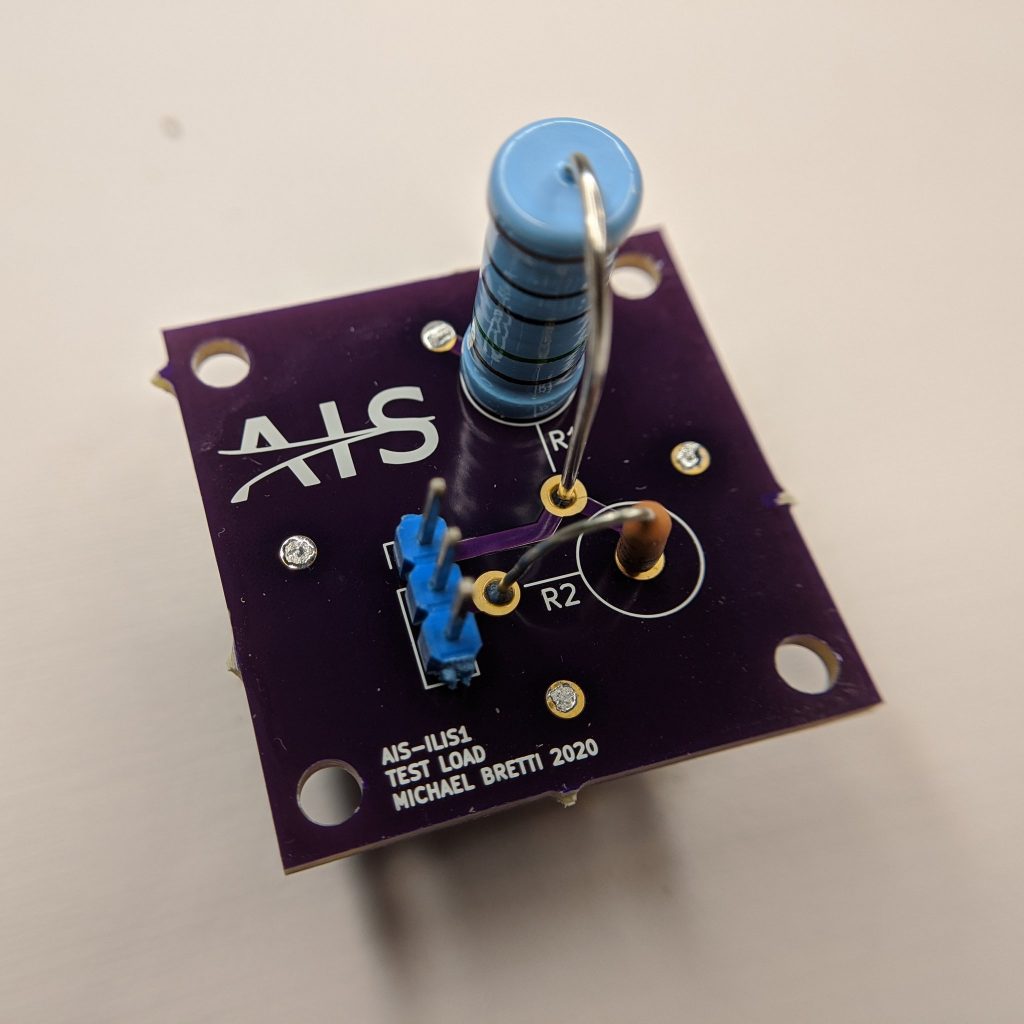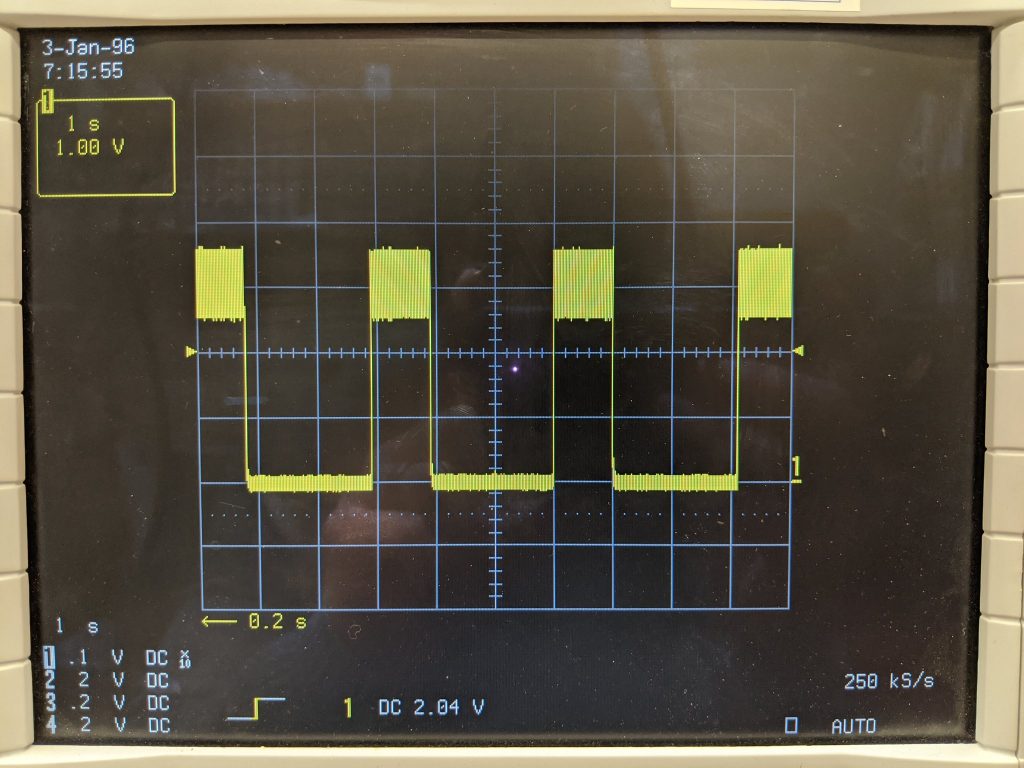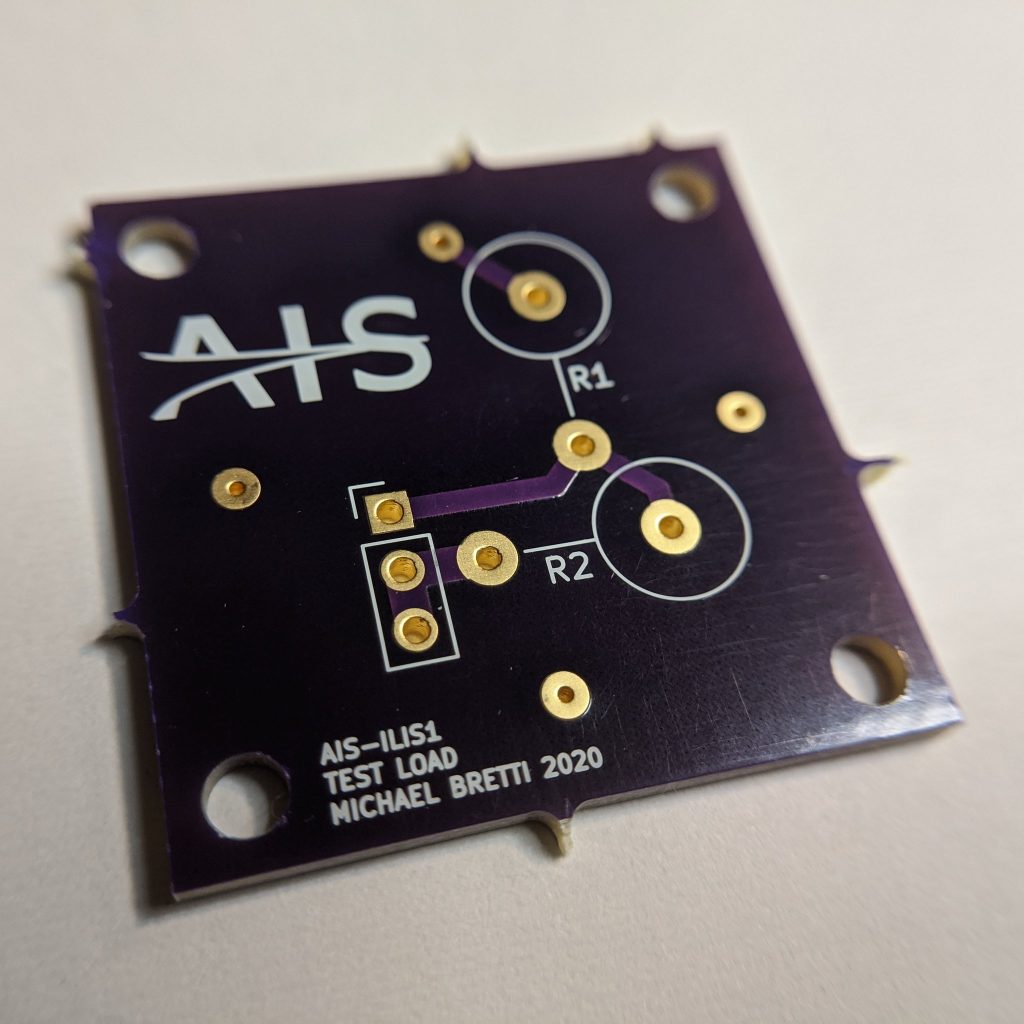Before ignition testing of the AIS-ILIS1 ionic liquid electrospray thrusters for nanosatellites, the electronics driving and controlling the thruster need to be completely qualified. In order to prepare for this testing, and to verify that my electronics design is actually viable, I have designed and built a high voltage test load.
The test load is a very simple, low-cost, but powerful piece of testing equipment for verifying thruster electronics functionality. The load consists of a 10kV high voltage 10M resistor to simulate the maximum expected current loading on the power supplies during ideal emission. A 10k resistor is used in series to create a simple voltage divider, with readout pins to measure the output waveform of the thruster electronics when connected to the load. This combination gives a 1V/kV reading.

The test load PCBs were sent out for fabrication to OSHPark. The mounting holes and HV connections line up exactly where the ion emitter assembly would be located on the ILIS1 board.
Here we see the high voltage test load for the AIS-ILIS1 ionic electrospray thruster soldered up and ready to go. I am just waiting on the final HV power supply for the thruster electronics to arrive, and qualification can begin. In the meantime, I can mount this up to the board and run pre-checks with the +HV power supply already mounted to the ILIS1 board.

Here the test load is bolted to the board using non-conductive #4-40 nylon bolts and nuts. In order to interface the board with the emitter connection pad, spring contacts were selected and used, to allow for adjustable contact, as well as to raise the test load up over the HV emitter pad to ensure arcing would not occur to any of the grounded load connections.
Just to check everything is in proper working order and the load is functioning as intended, I ran the load with the +HV supply currently on the thruster board. The output looks good at 1V/kV, and is the same as when prior tested using external test resistors for initial validation.

I am hopefully only a couple of weeks away now from fully qualifying the thruster drive electronics and passing the first major and crucial milestone for this highly anticipated thruster development!





